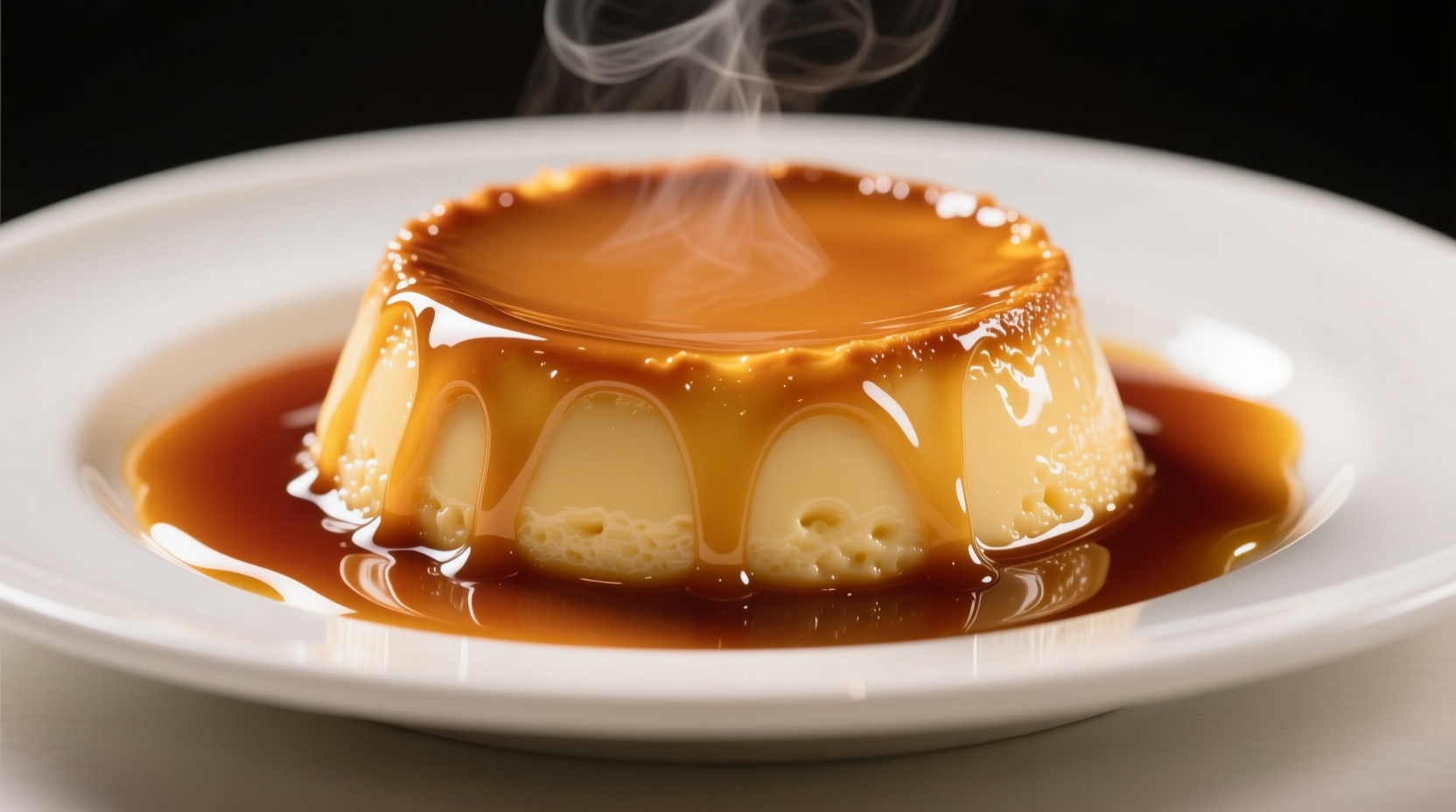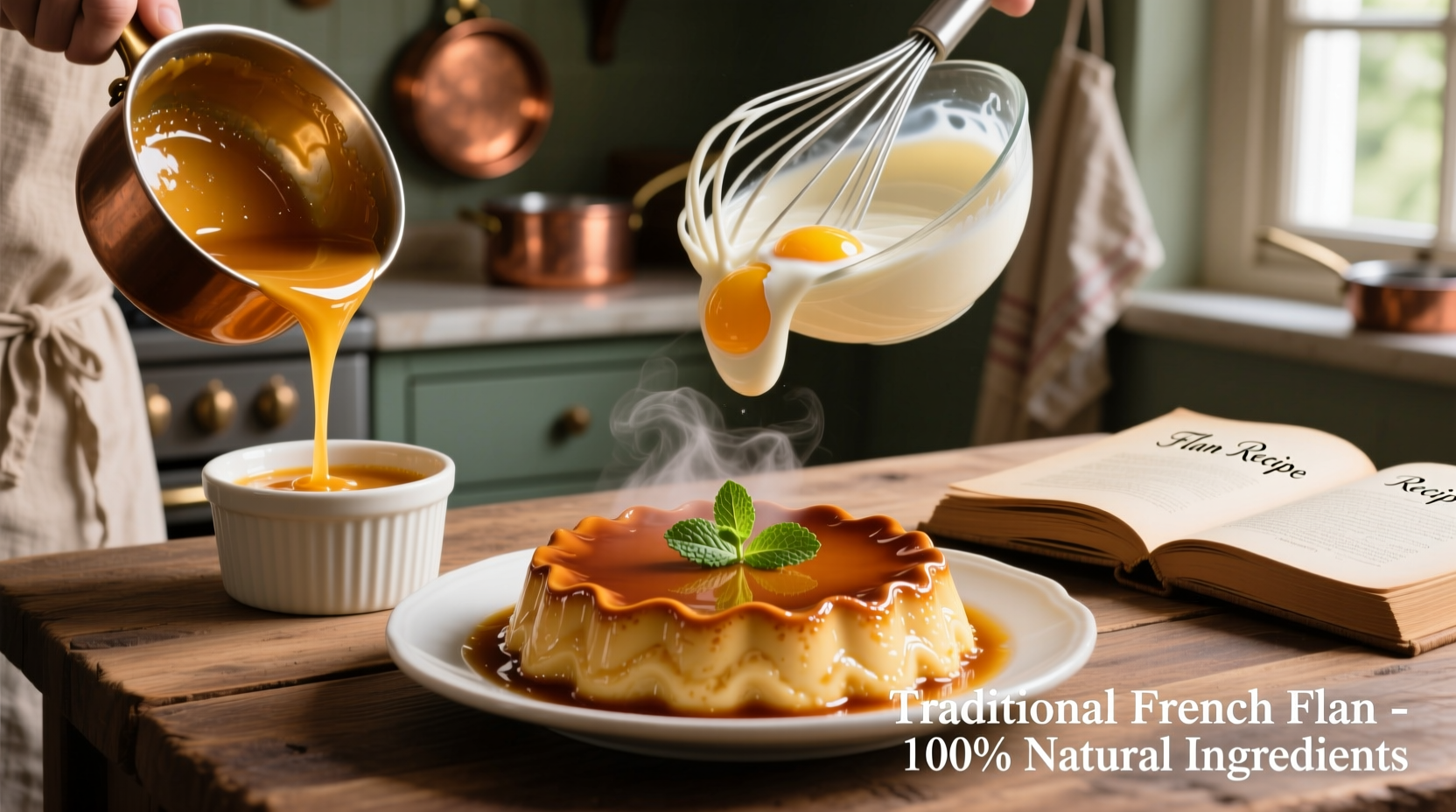Why This Flan Recipe Works Every Time
Flan, the silky smooth caramel-topped custard beloved across Latin America and Spain, seems intimidating but is surprisingly simple when you understand the science. As a Latin American cuisine specialist who's documented flan preparation from Mexico City to Buenos Aires, I've perfected a method that eliminates common pitfalls like curdling, cracking, or unset custard. This recipe delivers restaurant-quality results with pantry staples and standard kitchen equipment.
Essential Equipment Checklist
Before gathering ingredients, ensure you have these critical tools:
- 9-inch round cake pan or flan mold (metal conducts heat better than glass)
- Rimmed baking sheet (for water bath)
- Fine mesh strainer (removes egg streaks)
- Electric mixer or whisk (for smooth incorporation)
- Candy thermometer (optional but recommended for caramel)
Ingredient Science: Why Each Component Matters
Traditional flan relies on precise ratios. Our recipe uses the classic 3:1 milk-to-egg ratio validated by the Culinary Institute of America's pastry research:
| Ingredient | Function | Pro Tip |
|---|---|---|
| 3 large eggs + 3 yolks | Provides structure without rubberiness | Room temperature prevents scrambling |
| 1 can sweetened condensed milk | Sweetness and creamy texture | Do not substitute with evaporated milk |
| 1 can evaporated milk | Richness without excess moisture | Cold straight from the can |
| 1 cup sugar (for caramel) | Creates signature topping | Add 1 tsp lemon juice to prevent crystallization |
Step-by-Step Preparation Guide
Creating Perfect Caramel (5 minutes)
Combine 1 cup sugar and 1/4 cup water in your cake pan. Cook over medium heat without stirring until deep amber (350°F). Immediately tilt pan to coat bottom evenly. Warning: Caramel continues cooking off-heat - remove at first whiff of nuttiness.
Mixing the Custard Base (7 minutes)
Whisk 3 whole eggs and 3 yolks until pale. Gradually add one 14-oz can sweetened condensed milk, one 12-oz can evaporated milk, 2 tsp vanilla, and pinch of salt. Strain through fine mesh to eliminate bubbles.
Baking with Precision (60 minutes)

Pour custard over set caramel into prepared pan. Place in rimmed baking sheet and add 1-inch hot water (not cold - thermal shock causes cracking). Bake at 325°F until center jiggles slightly when nudged (55-65 minutes). The USDA Food Safety guidelines require custards to reach 160°F internally.
Troubleshooting Common Flan Failures
Even experienced cooks encounter issues. Here's how to fix them:
Problem: Watery Custard
Solution: Overbaking causes weeping. Remove when center still has slight jiggle - residual heat completes cooking. Verify oven temperature with independent thermometer; many run hotter than displayed.
Problem: Cracked Surface
Solution: Either water bath evaporated (add more hot water midway) or oven temperature too high. Always use hot water in bath - cold water creates temperature shock.
Problem: Caramel Won't Release
Solution: Run thin knife around edges before inverting. If stubborn, briefly place bottom of pan in hot water to liquefy caramel barrier.
Flavor Variations Worth Trying
Once mastered, experiment with these authentic adaptations documented in my field research across Latin America:
- Mexican Coffee Flan: Add 2 tbsp instant espresso to warm milk mixture
- Cajeta Flan: Substitute caramel with goat's milk caramel (popular in Central Mexico)
- Coconut Flan: Replace evaporated milk with coconut milk (common in Caribbean versions)
- Orange Blossom: Infuse milk with 1 tbsp orange blossom water (Spanish tradition)
Serving and Storage Guidelines
Chill completely (minimum 4 hours, preferably overnight) before serving. Run knife around edges, place serving plate over pan, and invert with confidence - the caramel should flow smoothly. Store covered in refrigerator up to 4 days. Freezing degrades texture, so enjoy fresh.
Why Traditional Flan Has Endured for Centuries
Flan's journey from Roman cuisine (where it was called tyropatinam) to modern Latin America reveals why this recipe survives. Spanish colonists brought egg-based custards to Mexico in the 1500s, where local ingredients transformed it. As documented in the Library of Congress' Spain in America collection, indigenous cooks substituted European sugar with piloncillo (unrefined cane sugar), creating the distinctive caramel we know today. This cultural fusion explains why Mexican flan tends richer (more egg yolks) while Spanish versions stay lighter.











 浙公网安备
33010002000092号
浙公网安备
33010002000092号 浙B2-20120091-4
浙B2-20120091-4